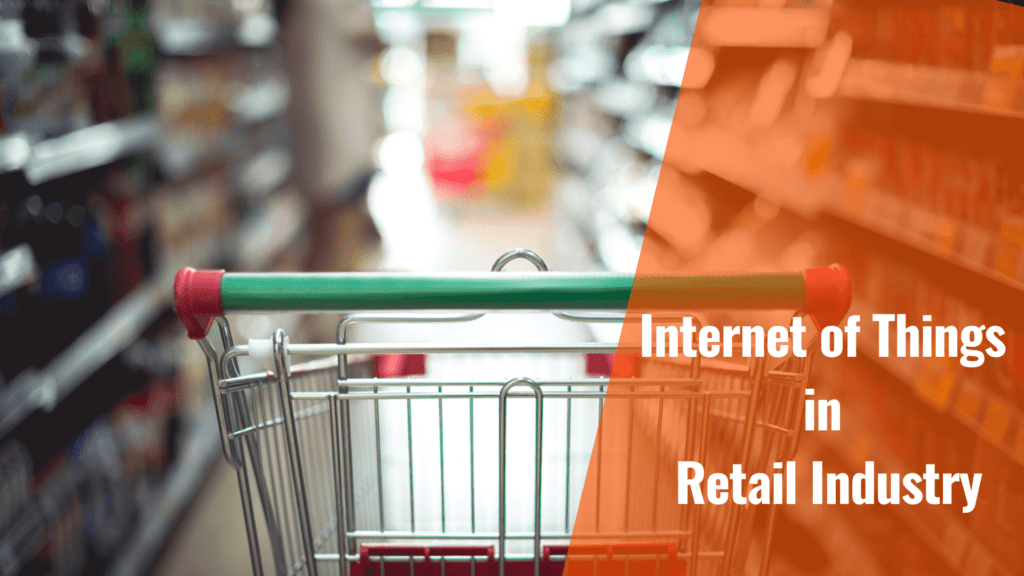Internet Of Things has always played a significant role in the retail industry, stocking and warehousing. And its value is projected to rise from USD 14.5 billion in 2020 to USD 35.5 billion by 2025, at a CAGR of 19.6%
The term Internet of Things was coined by Kevin Ashton when he was faced with a challenge in logistics and supply chain management while he co-founded the MIT Auto-CAD centre. Today the potential of IoT in the retail market is high and touch many value points such as customer experience, retail management, data analytics, decision making, warehouse management and logistics.
In this blog let’s explore more about how IoT drives value in the retail market.
Internet of Things in Retail Market
Internet of Things offers brilliant opportunities in the transportation and logistics department along with facilitating the digital transformation of an area that can potentially face a huge crunch-retail.
Retailers have been utilizing the capabilities of RFID for a long time. With the implementation of newer technologies, rapid improvements in connectivity and communication instruments, and new devices, the Internet of Things witnessed massive growth. The opportunities to improve operations and customize offerings for customers with fantastic experiences customers require are even bigger. Apart from this, there are massive benefits for the E-commerce industry.
Enriching Customer Experience
The key to a successful business is dependent on a rich customer experience and happy customers.
In today’s world of a channel-agnostic, well-informed consumer, logistics play an important part in meeting the demands of consumers and optimization for better customer experience and services. As we will see below, there are many other areas where the Internet of Things can help provide a special customer experience.
IOT is expected to grow at a rapid pace of 20.5% CAGR in the coming years, and investors, as well as developers, expect a large chunk of this growth to be contributed by the retail Industry.
Benefits of existing users of IOT.
In reports published by Verizon, the giant in USA, the following statistics were reported
78 % retailers saw that the Internet of Things changed user experience for the better by a large margin.
89 %of early-movers were able to collect in depth details of customer preferences and their pattern of purchases using the Internet of Things.
- 76% % of early movers in the Internet of Things saw the creation of new opportunities and better collaboration with newer partners in better delivery experience, products and services to customers.78 % retailers saw that the Internet of Things changed user experience for the better by a large margin.
Digital Signage and IoT
Digital signage is the primary area which in combination with IoT gives rise to new forms of retail. With the use of digital signage in IoT, personalization, human behaviour recognition, and data analysis using sensors, offered by various data-generating IoT-enabled devices, the situation improves dramatically.This is how businesses bridge physical and digital aspects of retail especially when touch is involved.
Inventory
Dynamic prices, Inventory shelves management, and cutting edge experiences with new age IoT improves customer care within physical stores and improve customer footfall.
Use of IOT, LI-FI, and LED in Retail:
A groundbreaking technology that can completely change the face of the retail industry is the M2M digital signage and the indoor wireless visual communications technology LiFi (Light Fidelity).
This works on the principle of light. Communication technologies use visual light to transmit information with wireless connectivity.
LiFi is touted to be the replacement of beacon technologies in retail, where it can move in to become a great disrupter. According to many reports, retail is the main segment where this technology may play a huge role.
It’s extremely useful and offers customers fast mobile connectivity, increasing customer experience while also enabling location-based interactions with promotions.
If there is any environment where there is a lot of LED lighting, opportunities for marketing and customer engagement in that segment is quite high.
As LiFi standardization has now become the norm, prices are expected to drop by a large margin driving increased adoption of LiFi.

